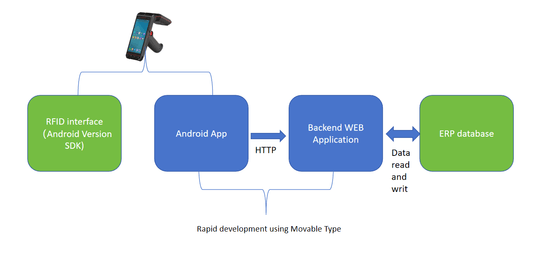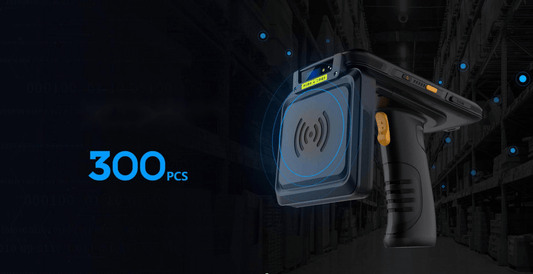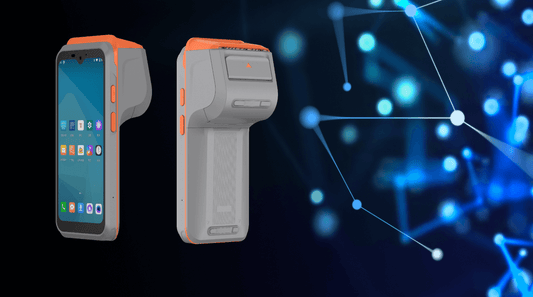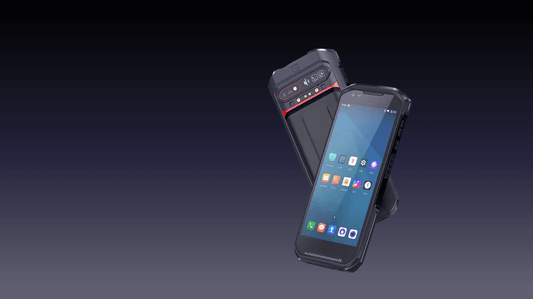Why ‘Print-on-the-Spot’ Is the Missing Link in Your Supply Chain Digitization
Industry printing handheld terminals are transforming how businesses handle labeling, tracking, and data capture — right at the point of need. Discover why this technology isn’t just a nice-to-have, but an essential component for a modern, agile, and efficient supply chain. If you’re aiming for true supply chain digitization, you may be overlooking a crucial tool: on-demand printing.
The Evolving Landscape of Supply Chain Digitization
Every industry is feeling the accelerating pressure of digitization. Warehouse operations, logistics, and inventory management all demand real-time data to satisfy customer expectations and enhance efficiency. Yet, many organizations still rely on outdated, centralized label printing or manual data entry, leading to costly errors and delays.
Industry printing handheld terminals are changing this landscape. These powerful mobile devices enable staff to print labels, tags, and receipts instantly—from the shop floor to the delivery dock—linking physical goods to digital records at the source. This real-time “print-on-the-spot” capability bridges a crucial gap in digital workflows.
What Is an Industry Printing Handheld Terminal?
An industry printing handheld terminal combines three functions in a portable form: data capture, robust computing, and instant printing. Unlike stationary printers, these devices move with your staff, allowing barcode scanning, on-device management, wireless data syncing, and physical label printing—anywhere in your operations.
- Core features:Integrated thermal printer for immediate labelingTouchscreen and rugged hardware for industrial useWireless connectivity (Wi-Fi, Bluetooth) for syncing with central systemsBarcode/RFID scanning and data input capabilitiesCompatible with modern enterprise software platforms
This versatility streamlines processes by letting workers handle everything from goods receipt to item tracking without leaving their post or waiting for printed materials.
Why Print-on-the-Spot Matters
Eliminating the wait and travel time for labels and receipts pays off in multiple ways:
- Reduced delays: Labels are created exactly where they’re needed, removing queue bottlenecks at central printing stations.
- Fewer errors: Printing at the point-of-action ensures correct, real-time data transfer between digital records and physical goods, reducing mismatches and mislabeling.
- Agility: Staff can adapt labeling and documentation to immediate needs, supporting last-minute changes, rush orders, or special handling without disruption.
- Accountability: With handheld devices, each transaction or item movement is accurately recorded, creating a transparent audit trail and reducing the risks of manual mishandling.
Incorporating industry printing handheld terminals into your operations means your supply chain data is always up-to-date, traceable, and reliable.
Key Benefits for Modern Supply Chains
Enhanced Efficiency
When staff can print labels or receipts directly where goods are received, stored, or shipped, they spend less time walking back and forth to stationary printers. This reduces downtime and speeds up every step, from inbound logistics to outbound fulfillment.
Improved Data Accuracy
Traditional manual data entry and centralized label pre-printing often result in missing information, outdated labels, or transcription mistakes. Using a printing handheld terminal at the point of action ensures that information is current, relevant, and correctly affixed to products or packages.
Streamlined Traceability
In regulated industries or situations requiring lot-level tracking, traceability is a priority. Handheld terminals capture and print identifying information as part of each workflow—building a digital audit trail that links every barcode or RFID tag to both real-time system updates and a physical item.
Cost Reduction
Fewer print errors, less wasted material, and minimized staff downtime lead straight to cost savings. The flexibility of on-demand printing also means no stockpiling of pre-printed labels that can become obsolete with process or compliance changes.
Better Compliance and Customer Confidence
Instant printing at the source makes it easier to apply all required data, such as expiration dates, batch numbers, or destination codes, reducing compliance headaches and giving customers confidence in product origins, handling, and safety.
Real-World Applications of Handheld Printing Terminals
Industry printing handheld terminals are used in varied sectors, reshaping workflows and boosting competitiveness.
- Warehousing and distribution: Staff receive shipments, scan barcodes, and print item or location labels immediately, cutting check-in times and preventing inventory misplacement.
- Manufacturing: Operators track work-in-progress materials and finished goods, printing job tickets or batch labels as each stage completes.
- Field service and repairs: Technicians generate repair tags or receipts at the customer site, linking on-the-spot work with digital records and billing.
- Healthcare: Nurses and staff label samples or medications instantly for accurate tracking and patient safety, minimizing risk of mix-ups.
Integration with business management software ensures these devices become a natural, digitized extension of existing workflows.
Overcoming Implementation Concerns
Investing in new hardware and workflows can seem daunting, but modern industry printing handheld terminals are built for straightforward deployment and ease of use.
Seamless Integration
Today’s handheld terminals are compatible with major warehouse management systems (WMS), enterprise resource planning (ERP) platforms, and inventory control software. They offer standard APIs and wireless connectivity that speed up deployment, keeping IT headaches to a minimum.
User-Friendly Experience
Intuitive touchscreen interfaces reduce training requirements. Employees can quickly adapt to handling printing tasks while benefiting from familiar scanning and data entry methods.
Rugged Reliability
Unlike consumer devices, industry-grade handheld terminals are engineered for harsh environments—resisting dust, drops, moisture, and temperature fluctuations.
Future-Proofing Your Digital Supply Chain
Supply chains are only as strong as their weakest link. Integrating industry printing handheld terminals closes the historical gap between digital records and physical flows. As automation expands and regulatory environments grow stricter, the flexibility, accuracy, and traceability offered by on-demand printing will only become more essential.
Looking ahead, you can expect even greater returns as handheld technology evolves:
- Advanced connectivity: Next-generation networks (5G, Wi-Fi 6) will make real-time syncing faster and more reliable.
- Cloud integration: Data from each action will enhance analytics, forecasting, and AI-driven process improvement.
- Enhanced security: Built-in encryption and user authentication protect sensitive data at every step.
Choosing solutions that scale and upgrade easily helps ensure your investments remain relevant as business needs and technology shift.
Choosing the Right Printing Handheld Terminal
Not every business requires the same features. When evaluating options, consider:
- Print resolution and speed: Match device capabilities to label requirements, especially in high-volume operations.
- Battery life: Long shifts call for devices that last; hot-swappable batteries are a plus.
- Connectivity options: Reliable wireless (Wi-Fi, Bluetooth, cellular) helps integrate with your existing networks.
- Ergonomics: Lightweight, balanced designs reduce user fatigue and support higher productivity.
- Software ecosystem: Ensure seamless compatibility with your workflow, whether you use off-the-shelf or custom-tailored business applications.
Conclusion
On-demand, point-of-need labeling using industry printing handheld terminals is the missing link in complete supply chain digitization. Unlock faster, safer, and more accurate workflows—and set your operation up for future growth—with this essential technology. Consider how print-on-the-spot can take your digitization efforts to the next level.
No comments














0 comments